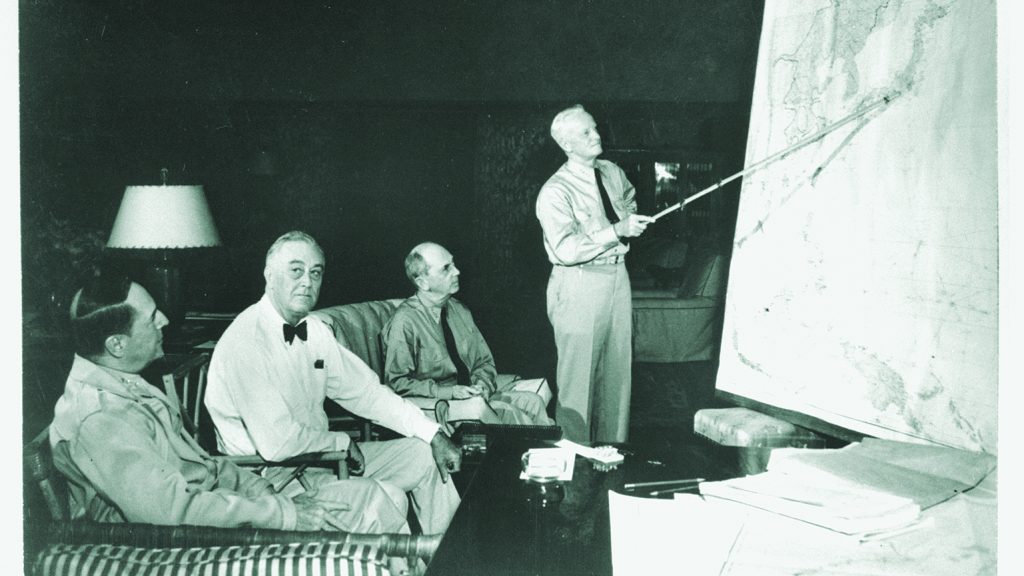Admiral William D. Leahy, often referred to as “Bill” Leahy, was a prominent figure in the United States Navy during World War II. He served as the Chief of Naval Operations (CNO) from 1937 to 1939 and later held the position of Chief of Staff to the Commander in Chief of the United States Army and Navy (a precursor to the role of Chairman of the Joint Chiefs of Staff) from 1942 to 1945. Leahy was one of the highest-ranking military officers in the United States during the war and played a crucial role in the decision-making process of the Allied forces.
Leahy is primarily associated with his positions in Washington, D.C., and his role as the senior military advisor to President Franklin D. Roosevelt and President Harry S. Truman. His duties were focused on coordinating the efforts of the U.S. Navy and the U.S. Army in the overall war effort and working closely with other Allied leaders, such as British Prime Minister Winston Churchill and Soviet Premier Joseph Stalin.
Leahy’s presence and influence were more strategic and diplomatic in nature, as he played a key role in shaping the grand strategy of the Allies and ensuring cooperation between the United States and its allies. He was involved in high-level discussions related to the planning of major military operations, including the Normandy landings (D-Day) and the use of atomic bombs in Japan.
Relationship with General Douglas MacArthur
Admiral William D. Leahy and General Douglas MacArthur had a complex working relationship during World War II. MacArthur was a prominent American military leader in the Pacific Theater, known for his command in the Southwest Pacific Area, and as mentioned Leahy was the Chief of Staff to the Commander in Chief of the United States Army and Navy, serving as the senior military advisor to President Franklin D. Roosevelt and later to President Harry S. Truman.
Their relationship was marked by a certain degree of tension and disagreement, primarily due to differences in strategy and priorities. Here are some key aspects of their relationship:
Strategic Differences: Leahy favoured a Europe-first strategy, which meant giving priority to the defeat of Nazi Germany before fully committing to the Pacific War against Japan. MacArthur, on the other hand, was focused on his campaign to retake the Philippines and advance toward Japan. This strategic difference led to some friction between the two.
Civil-Military Relations: MacArthur had a strong personality and a tendency to assert his views forcefully. This sometimes led to clashes with civilian leaders and military colleagues, including Leahy. MacArthur’s desire for more resources and autonomy in the Pacific theatre occasionally put him at odds with Leahy and other top military officials.
Coordination: Leahy was responsible for ensuring coordination and cooperation between the different branches of the U.S. military and working with other Allied leaders. This role sometimes required him to mediate between MacArthur and other military leaders.
Presidential Influence: Both Leahy and MacArthur had access to President Roosevelt and later President Truman. Leahy, as a senior advisor to the president, had significant influence over military strategy and policy. MacArthur, however, had his own direct line of communication with the president, which allowed him to advocate for his Pacific-focused strategy.
Despite these differences and occasional disagreements, both Leahy and MacArthur were committed to the overall Allied war effort. They recognised the importance of working together to achieve victory in the Pacific and played their respective roles in the successful conclusion of World War II.
After the war, MacArthur would go on to play a significant role in the occupation and reconstruction of Japan, and Leahy continued to serve as a key military advisor to President Truman during the early years of the Cold War.

See also: Wikipedia.
